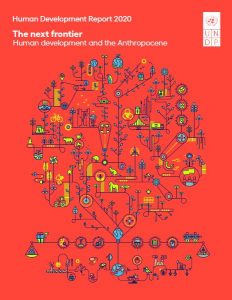 Prof. (Dr.) S.N. Misra* in Bhubaneswar, October 30, 2021: Infant Mortality Rate (IMR) is widely accepted as a proxy for overall health of a society and health care quality. A healthy child is a precursor to India’s quest for reaping demographic dividend. Therefore, Government of India’s Annual Sample Registration Survey that India’s IMR was 30 infant deaths per 1000 live births in 2019 is disturbing.
Prof. (Dr.) S.N. Misra* in Bhubaneswar, October 30, 2021: Infant Mortality Rate (IMR) is widely accepted as a proxy for overall health of a society and health care quality. A healthy child is a precursor to India’s quest for reaping demographic dividend. Therefore, Government of India’s Annual Sample Registration Survey that India’s IMR was 30 infant deaths per 1000 live births in 2019 is disturbing.
More so, since most developed contain it around 5. While this is an improvement over IMR of 50 in 2009, its still high compared to SDG target. There are wide variations between different states, with Kerala having an IMR of 6 matching most developed countries, Madhya Pradesh has the dubious record of 46 deaths per 1000 births, comparing with least developed countries like Sudan and Afghanistan. The report also brings out wide variation between the rural India (50) & 32 for urban India
The Millennium Development Goals (MDG) had set a goal of 29 per 1000 as IMR for India; the country had missed it with an achievement of 35. India had also missed its target to reduce its Maternal Mortality Rate to 125 per lakh by a wide margin (172). SDG 2015 had brought out that out of 195 countries analyzed, 122 had met the MDG target while the remaining countries including India had missed the target in IMR. Since maternal health and early child mortality are closely related, India’s development deficit is rather palpable and does not sit well with the high growth clocked during (2005-2015).
The latest survey clearly shows that states like Kerala with IMR of 6, Delhi (11), Tamilnadu (15) and Maharashtra (17) have performed creditably while rich states like Gujarat and poor states like Bihar have a very high IMR of around 30. Madhya Pradesh is an outlier with IMR of 46. Quite clearly this concern has not been factored as a policy priority by these states.
The rural urban divide is also quite palpable, particularly in Gujarat (18-29) whereas in Kerala the disparity is the least (5-7). The North South divide also shows up distressingly, with most of the southern states showing much better progress (6 -20) as against northern states (27-41). The Eastern states also do not fare creditably.
 The Human Development Report (2020) clearly brings out that there is a negative correlation between Human Development Index, child nutrition and IMR. For instance, a highly developed country like Norway has HDI of 0.957 with IMR of 2.3 and no child malnutrition. A country like South Korea which lagged behind India in 1950 in terms of per capita income has a HDI of 0.916 while its IMR is as low as 3.7 and percentage of mal nourished children is 2.5.
The Human Development Report (2020) clearly brings out that there is a negative correlation between Human Development Index, child nutrition and IMR. For instance, a highly developed country like Norway has HDI of 0.957 with IMR of 2.3 and no child malnutrition. A country like South Korea which lagged behind India in 1950 in terms of per capita income has a HDI of 0.916 while its IMR is as low as 3.7 and percentage of mal nourished children is 2.5.
In contrast, India’s HDI is 0.645 with IMR of 30 (2019) and children under nourished is around 40%. There is also wide variation in terms of public health allocation which is as high as 9.6% of GDP for Norway, 7.2% in South Korea while in India it is as low as 1.5% of the GDP. A number of experts and National Health Policy wistfully pitch the minimum public allocation to 3% of GDP.
Health being a state subject, there are wide variation in allocation to health, with states like Kerala and Delhi allocating 10% of their budget to health care as against around 5% by states like Gujarat and MP. The huge interstate variation in IMR is largely attributable to public allocation to health by states and continued apathy by the Centre in terms of allocation and lip service towards children’s health care.
In the recently released National Family and Health Survey 2021, the report broadly buttresses the findings of the Registrar General. It also brings out how anemia amongst women (15-49 years) is a major factor contributing to prenatal mortality and child mortality within a year. Even a state like Kerala shows an anemia percentage of 33% amongst women, while in Gujarat it is as high as 56.5 and 58.3 for Bihar.
The rhetoric of Anaemia Mukt Bharat has remained a chimera and the vicious cycle of chronic malnutrition, poverty and poor sanitation tarnishes our growth story.
In a perceptive study, it has been brought out that the astounding success of Kerala in containing IMR is mainly due to high female literacy, good accessibility of health services and equitable distribution of wealth due to land reforms. In another perceptive study, it is seen that there is a strong negative correlation (-0.73) between IMR and female literacy. Similar negative correlation is noticed between immunization and IMR, with measles accounting for large chunk of child mortality.
 The disparity between urban and rural population is largely due to better health care facility in the urban areas. Interestingly, there is a positive correlation between IMR and Scheduled Castes. A developed state like Punjab with the highest SC population of 30% shows a disproportionate level of IMR amongst the scheduled castes. Most studies however highlight that female education is the most significant factor contributing to high IMR. The NFHS survey brings out how as against 55% of women who are literate in the age group of 15 -49, it is 78% for men.
The disparity between urban and rural population is largely due to better health care facility in the urban areas. Interestingly, there is a positive correlation between IMR and Scheduled Castes. A developed state like Punjab with the highest SC population of 30% shows a disproportionate level of IMR amongst the scheduled castes. Most studies however highlight that female education is the most significant factor contributing to high IMR. The NFHS survey brings out how as against 55% of women who are literate in the age group of 15 -49, it is 78% for men.
In a riveting study, Prof Nishta Murthy brings out how there is a serious link between democracy and IMR. She highlights how a higher level of political representation, citizen participation and electoral competition provide political incentive for electoral representatives to reduce infant mortality. The data from Kerala, Delhi and Tamil Nadu on IMR clearly support the above hypothesis. She also brings out how non democratic countries like China and Cuba have made significant strides in improving public health outcomes.
Provision of broad based health services has played a very important role in reducing IMR in these countries. Quite clearly political will , priority and competitive politics can make the party in power accountable for the poor record in containing infant mortality& take time bound steps to improve the micro nutrient intake of children and expecting mothers. The baby steps being taken by many states are not good enough!
• Dean, School of Management, KIIT Deemed to be University, Bhubaneswar


Leave a Reply
Be the First to Comment!